Adult Male Rhino Iguana For sale
$2,249.99
WE HAVE RHINO IGUANA FOR SALE. HERE ARE SOME HIGHLIGHTS:
- Cyclura cornuta
- Captive Bred
- Male
- Approximately 5 Ft From Head To Tail
- Adults Are Averaging Around 5 – 5.5 Feet In Length
- Feeding On Vitamin Dusted Vegetables, Fruits, Greens And Iguana Diet
FUN FACTS!
- This Is An Extremely Smart Species That Makes For An Awesome Pet
- These Get Their Name From The Horn On Their Snout That Develops As They Mature
- Originating Out Of The Dominican Republic And Haiti
- Living Their Lives Along The Tropical Islands These Iguanas Thrive In Hot Humid Climates
- With Proper Care These Iguanas Can Live Up To 50+ Years At A Time
Rhino Iguanas
Rhino iguanas, scientifically known as Cyclura cornuta, are a captivating species of lizard that belong to the Iguanidae family. Endemic to the Caribbean island of Hispaniola, which is shared by the Dominican Republic and Haiti, these magnificent reptiles are primarily found in rocky, dry habitats such as scrub forests and coastal terraces. The name “rhino iguana” is derived from the distinctive horn-like protrusions on their snouts, which resemble the horns of a rhinoceros, setting them apart from other iguana species.
Rhino iguanas are characterized by their robust build, with males typically reaching lengths of up to 54 inches and weighing as much as 20 pounds, making them one of the larger iguana species. Females are generally smaller but share similar physical traits. Their skin is covered in a tough, scaly texture, usually varying in shades of gray, brown, or green, providing effective camouflage in their natural rocky environments. Additionally, their muscular limbs and strong claws are adapted for climbing and digging, aiding their survival in the wild.
A remarkable feature of rhino iguanas is their pronounced cranial crests and subtympanic shields, which add to their unique appearance. These crests run from the top of their heads down to their tails, with the horn-like scales on the snout being more prominent in males. This sexual dimorphism is not only crucial for species identification but also plays a role in their social structure and mating behaviors.
Understanding the physical and ecological traits of rhino iguanas provides valuable insights into their behavior, dietary needs, and conservation status. Given their limited geographic range and specific habitat requirements, rhino iguanas are considered vulnerable, with habitat destruction and invasive species posing significant threats to their populations. Efforts to protect these unique lizards are essential for preserving the biodiversity of their native ecosystems.
Habitat and Distribution
Rhino iguanas, scientifically known as Cyclura cornuta, are predominantly found in the Caribbean, with their native range concentrated on the island of Hispaniola. This island, shared by the Dominican Republic and Haiti, provides the diverse environments that these reptiles need to thrive. Rhino iguanas are particularly adapted to dry forests, scrublands, and rocky terrains, where they find ample shelter and food sources.
In their natural habitat, rhino iguanas are often seen basking on sunlit rocks or seeking refuge in the crevices of limestone formations. These iguanas are well-suited to arid conditions, relying on the sparse vegetation that characterizes these regions. They play a crucial role in their ecosystem, aiding in seed dispersal and maintaining the balance of their native flora.
However, the distribution of rhino iguanas has been significantly affected by human activities. Habitat loss due to deforestation, agricultural expansion, and urban development poses a substantial threat to their populations. The destruction of dry forests and scrublands reduces the available living space for these iguanas, forcing them into smaller, fragmented areas. Additionally, the introduction of invasive species and hunting for the pet trade further endangers their survival.
Conservation efforts are crucial to preserving the natural habitats of rhino iguanas. Protective measures, such as establishing nature reserves and enforcing anti-poaching laws, are essential to mitigate the impact of human activities. By understanding the specific environmental needs and challenges faced by rhino iguanas, conservationists can develop targeted strategies to ensure their continued existence in the wild.
Physical Characteristics and Behavior
Rhino iguanas, scientifically known as Cyclura cornuta, are unique reptiles native to the Caribbean islands, particularly Hispaniola. Their name originates from the prominent horn-like structure on their snouts, a distinct feature that sets them apart from other iguana species. These robust lizards can reach lengths of up to 54 inches, including their tails, and typically weigh between 10 to 20 pounds, with males generally being larger and more robust than females.
The coloration of rhino iguanas is predominantly grey or brownish-grey, which provides effective camouflage against their rocky, arid habitats. Their skin is rough and heavily scaled, offering protection from the harsh sun and predators. The “horn” on their snout, which resembles a rhinoceros horn, is made of keratin, the same material found in human hair and nails. This horn is particularly prominent in males and plays a role in territorial displays and combat with other males.
Behaviorally, rhino iguanas are primarily herbivorous, feeding on a diet consisting of leaves, flowers, fruits, and occasionally insects. This diverse diet helps them obtain essential nutrients and supports their overall health. They are diurnal reptiles, meaning they are active during the day, and spend a considerable amount of time basking in the sun to regulate their body temperature. Basking is crucial for their metabolism and digestion, as they rely on external heat sources to maintain their body functions.
Rhino iguanas exhibit strong territorial behavior, particularly during the breeding season. Males establish and defend territories that can encompass several females. These territories are marked by scent glands located on their hind legs, which they use to communicate dominance and ward off rivals. Social structures within rhino iguana populations are complex, with dominant males often engaging in physical confrontations to maintain their status.
These behaviors are vital for the survival of rhino iguanas in their natural habitats. Their territorial nature ensures access to crucial resources such as food and basking sites, while their diet and basking habits support their physiological needs. Understanding the physical characteristics and behavior of rhino iguanas provides valuable insights into their ecological roles and the conservation efforts required to protect these remarkable reptiles.
Diet and Nutrition
Rhino iguanas, primarily herbivorous reptiles, have specific dietary preferences that are essential for their health and well-being. In the wild, their diet mainly consists of a variety of plants, leaves, flowers, and fruits. They are known to consume a wide array of vegetation, including leaves from different shrubs, blossoms, and fruits that fall from trees. This diverse diet provides them with the necessary nutrients to thrive in their natural habitat.
To replicate the natural diet of rhino iguanas in captivity, it is crucial to offer a variety of vegetables and fruits. Leafy greens such as collard greens, mustard greens, and dandelion greens should form the bulk of their diet. These greens are rich in vitamins and minerals that are vital for the iguana’s health. Additionally, incorporating vegetables like squash, bell peppers, and green beans can provide variety and additional nutrients.
Fruits should be given in moderation due to their high sugar content. Suitable fruits for rhino iguanas include berries, mangoes, papayas, and figs. These fruits can provide essential vitamins and hydration but should not exceed 10% of their overall diet. It is important to avoid feeding them citrus fruits and avocados, as these can be harmful to their health.
Ensuring proper nutrition for rhino iguanas is not only about providing a balanced diet but also about avoiding specific foods that can be detrimental. Foods high in oxalates, such as spinach and rhubarb, can interfere with calcium absorption, leading to health issues like metabolic bone disease. Similarly, foods with high phosphorus levels should be limited to maintain a proper calcium-to-phosphorus ratio, crucial for bone health.
In captivity, it is also advisable to use calcium and vitamin supplements to prevent deficiencies. Dusting their food with a calcium supplement a few times a week and providing a multivitamin supplement once a week can help in maintaining their overall health. Proper hydration is equally important, and fresh water should always be available.
Reproduction and Lifespan
Rhino iguanas exhibit fascinating reproductive behaviors, crucial for understanding the species’ lifecycle and conservation. During mating season, which typically occurs in the warmer months, male rhino iguanas engage in distinct rituals to attract females. These rituals often involve head bobbing, physical displays, and sometimes confrontations with rival males. The dominant male gains the opportunity to mate with receptive females, ensuring the transmission of strong genetic traits.
Nesting behavior in female rhino iguanas is equally intriguing. After successful mating, the female seeks out a suitable location to lay her eggs, preferring sandy or soft soil areas that can be easily excavated. The female digs a burrow where she deposits an average of 5 to 20 eggs, covering them meticulously to protect from predators and environmental hazards. The incubation period for rhino iguana eggs ranges from 75 to 100 days, dependent on ambient temperature and humidity levels.
The care of young rhino iguanas is minimal post-hatching, as hatchlings are largely independent from birth. They instinctively dig their way out of the nest and begin foraging for food immediately. This early independence is critical for their survival, given the predation pressures they face.
In terms of lifespan, rhino iguanas can live significantly longer in captivity compared to the wild. In their natural habitat, they typically live around 15 to 20 years, facing threats such as predation, habitat destruction, and environmental changes. Conversely, in captivity, with proper care, nutrition, and veterinary oversight, rhino iguanas can live up to 25 years or more. Factors influencing their longevity include diet, living conditions, and genetic health.
Unique reproductive challenges for rhino iguanas include habitat fragmentation and climate change, which can disrupt their mating and nesting behaviors. Conservation efforts are essential to mitigate these impacts and ensure the continued survival of this remarkable species.
Conservation Status and Threats
The rhino iguana, known scientifically as Cyclura cornuta, is currently classified as “Vulnerable” on the International Union for Conservation of Nature (IUCN) Red List. This designation highlights the species’ susceptibility to extinction without significant conservation efforts. The population of rhino iguanas has been steadily declining due to several critical threats that have intensified over recent decades.
One of the primary threats to rhino iguanas is habitat destruction. Rapid urbanization, agricultural expansion, and deforestation have led to substantial habitat loss in their native environments, primarily located in the Caribbean, especially on the island of Hispaniola. As their natural habitats shrink, rhino iguanas are forced into smaller, fragmented areas, making it difficult for them to find sufficient food, shelter, and mates, which in turn affects their reproductive success and survival rates.
Invasive species also pose a significant threat to rhino iguanas. Predators such as feral cats, dogs, and pigs have been introduced to their ecosystems, leading to increased predation on iguanas and their eggs. Additionally, competition with invasive herbivores for food resources further exacerbates the challenges faced by rhino iguanas in their struggle for survival.
Another critical issue is the illegal trade of rhino iguanas. Despite protective legislation, these reptiles are often captured and sold in the black market for the exotic pet trade. This illegal activity not only reduces wild populations but also disrupts the ecological balance of their native habitats.
Efforts to conserve rhino iguanas have been initiated by various organizations and governments. Conservation programs focus on habitat restoration, legal protection, and public education to raise awareness about the importance of preserving this unique species. Breeding programs in captivity are also being implemented to bolster population numbers and potentially reintroduce individuals into the wild. Collaborative initiatives between local communities, conservationists, and international organizations aim to develop sustainable strategies to protect and preserve rhino iguanas for future generations.
Caring for Rhino Iguanas in Captivity
When considering keeping rhino iguanas as pets, it is crucial to understand the comprehensive care these magnificent reptiles require. Proper housing is the cornerstone of their well-being in captivity. An adequately sized enclosure is essential; adult rhino iguanas need a minimum of 8 feet in length, 4 feet in width, and 6 feet in height. This space provides ample room for climbing, basking, and exploring, which are vital for their physical and mental health.
Temperature control within the enclosure is another critical aspect. Rhino iguanas thrive in a well-regulated environment with a basking spot that reaches 95-100°F and ambient temperatures ranging between 80-85°F during the day. Nighttime temperatures should not drop below 70°F. Utilizing a combination of heat lamps, ceramic heat emitters, and thermostats ensures optimal thermal gradients, allowing the iguanas to thermoregulate effectively.
Diet is fundamental to the health of captive rhino iguanas. These reptiles are primarily herbivorous, requiring a diet rich in leafy greens, vegetables, and occasional fruits. A varied diet including collard greens, dandelion greens, squash, and bell peppers can help meet their nutritional needs. Supplementing with calcium and vitamin D3 is necessary to prevent metabolic bone disease, a common ailment in captive reptiles.
Regular health care is paramount. Scheduled veterinary check-ups, parasite control, and monitoring for signs of illness are essential practices. Rhino iguanas can suffer from respiratory infections, skin conditions, and other health issues if their environment and diet are not properly managed.
Behavioral enrichment plays a significant role in the overall well-being of rhino iguanas. Providing climbing structures, hiding spots, and varying their environment can stimulate their natural behaviors and prevent boredom. Interaction with their human caretakers, while respecting the iguanas’ natural disposition, can also be beneficial.
Caring for rhino iguanas demands a high level of commitment and responsibility. Potential keepers must be prepared to invest time, effort, and resources to ensure these remarkable reptiles live healthy and fulfilling lives in captivity.
Interesting Facts and Myths
Rhino iguanas, native to the Caribbean island of Hispaniola, captivate enthusiasts with their unique appearance and intriguing behaviors. One of the most fascinating facts about these reptiles is their impressive lifespan. In captivity, rhino iguanas can live up to 20 years, with some individuals reaching even 30 years, showcasing their remarkable resilience and adaptability.
A common myth surrounding rhino iguanas is that they are aggressive creatures. However, these iguanas are generally docile and can become quite tame with regular human interaction. Their intimidating appearance, characterized by a prominent horn-like structure on their snout, often leads to misconceptions about their temperament. This distinctive feature is actually a result of evolved bone growth, which is thought to aid in species identification and possibly in territorial disputes.
In terms of cultural significance, rhino iguanas hold a special place in the folklore of Hispaniola. They are often revered and sometimes feared, believed to possess mystical powers. Historically, these iguanas were seen as guardians of the land, a testament to their enduring presence in the region.
Another intriguing aspect of rhino iguanas is their diet. Unlike many other reptiles, they are primarily herbivorous, feeding on a variety of fruits, leaves, and flowers. This dietary preference plays a crucial role in their ecosystem, as they contribute to seed dispersal, aiding in plant regeneration and forest health.
Rhino iguanas also exhibit unique behaviors that endear them to herpetologists and hobbyists alike. For example, they are known to engage in head-bobbing and other physical displays to communicate with each other, particularly during mating season. These behaviors offer insight into their social structures and interactions within their species.
By debunking myths and highlighting these fascinating facts, we gain a deeper appreciation for rhino iguanas. These remarkable reptiles are not only survivors but also important contributors to their natural habitats, embodying a rich blend of history, culture, and ecological significance.

7 reviews for Adult Male Rhino Iguana For sale
Add a review Cancel reply
Related products
Iguanas





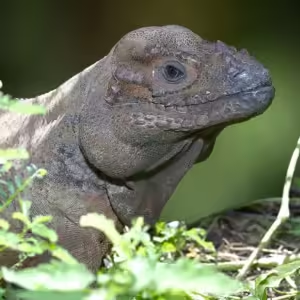

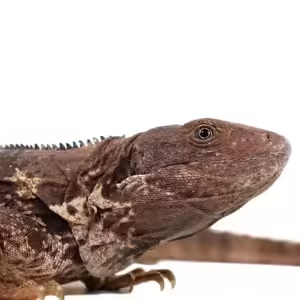




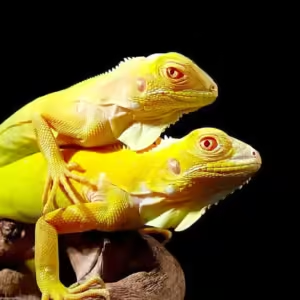




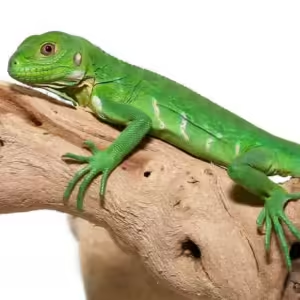


Julija Gr –
Got my refund in few hrs
I ordered a Rhino Iguana without previously checking if it’s legal in my state. I let them know the issue and that I’d like to be refunded. They emailed me within few hrs and issued the refund same day, the refund showed of my account within few hrs.
Although, I didn’t actually buy anything from there, the costumer service is 5 stars, quick and efficient !
Thank you !
Aj Biddle –
This was my first experience in ordering an Iguana by mail. Sunset Reptiles maintained quick and helpful communication throughout the transaction. My iguana was packed very carefully and arrived safely ahead of schedule. They even made sure to check the weather in my area to optimize the best possible day for shipping. Will definitely do business again in the future.
Cheryl Haas –
I bought a Adult Male Rhino Iguana and hatchling bearded dragon from them. After several emails about being out of stock of certain beardies, they shipped me a beautiful citrus bearded dragon with zero hassle. It’s been over a month now and both the iguana and the bearded dragon are eating and growing like weeds. I will definitely be purchasing through them again.
Heatish –
Very pleased
I saw some poor reviews online and just want to say that I ordered a small Rhino Iguana, in the winter, and she was shipped to me in a heated and insulated box, very secure. She arrived 4 hours late in cold weather but was still happy and ate 6 crickets right after arriving. I would suggest this company again and again, hands down!
mARION mULLINIX –
Docile and Adorable Iguana
I ordered an iguana cb hatchling. He/she arrived alive and crawled right onto my hand from the box/tub. “Chompers” ate within minutes of being placed in his enclosure and has a great personality. It’s been a few weeks and he loves to be hand fed flowers and treat veggies. He’s a great pet now and I’m excited about him growing bigger in the future. He will always be one spoiled lizard.
Ashley –
Our baby Rhino Iguana arrived this morning safe and sound. Package came in great condition and he was packed up nice and tight with his heat pack. Very alert and active. Only day one and he’s eating and drinking. So far so good! Very happy with the whole process. They were also quick to email mail me back with any of my concerns. Will definitely order again in the future.
Charity Quarrell –
I just received two Adult Male Rhino Iguanas yesterday. They are absolutely adorable, and in great shape.
Sunset reptiles was super quick in responding to any questions or concerns I had, and even gave me tips of care after the iguanas long trip! I highly recommend shopping with them. This is my second experience, and the first was just as great!